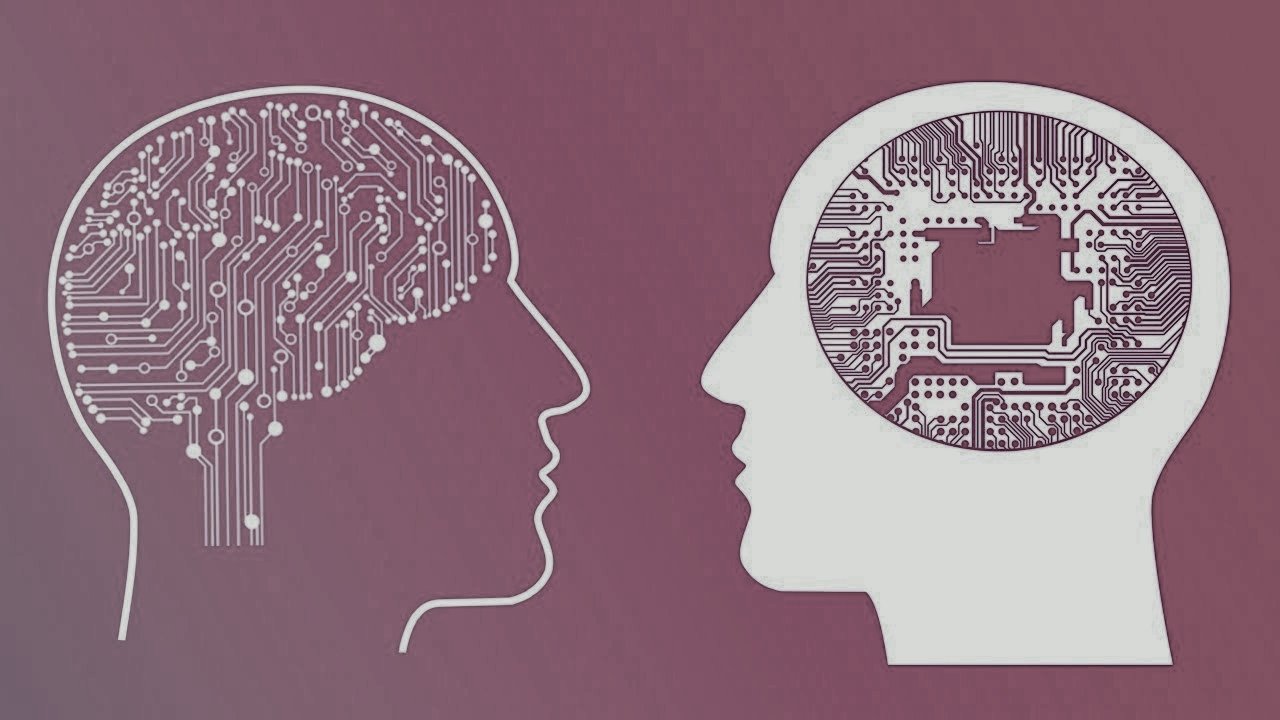
About the creator of the science of "Settletics"
« , , , , . , , »
,
Jan Korchmaryuk was born on September 12, 1963 in Volgograd. He has three higher educations: an engineer-economist, a software engineer, a CAD systems engineer. He was a leading researcher at the Nizhny Novgorod Research Institute, taught programming, now he works at the Volgograd Technical University as a computer center specialist.
Yang has been involved with the challenge of digital immortality since the early nineties. The solution he found took shape in the concept of a new science that resolves both personal and general existential risks. The science, which he called settleretics, from the word settle - to resettle.
During the birth and active development of the TG movement in Russia (2001-2014), he took part, as a settler, in all significant projects, including RTD, Russia 2045, various seminars and conferences on immortalism and transhumanism; also in cooperation with the Bulgarian philosopher Tanya Kolev, Yan held a conference on settlereticism in Bulgaria. All this time, he has been unsuccessfully seeking funding for experiments on the transfer of consciousness: for some of them he needs 2 million rubles, for others 10 million, and he estimates the full cost of digital immortality at 30 million dollars. The part of the Settlement that can be directly seen and understood is on his website - settleretics.ru .
Yang is not a billionaire, not an entrepreneur, not a professor, not a head of a laboratory or a popular video blogger, he is not the leader of any transhumanist organization and he has never, as far as I know, published in English in international scientific journals like Nature. I would say that he is an ordinary guy of 57 years old (nevertheless, quite famous in transhumanistic and not only circles) with a technical education, who has been practically single-handedly developing for more than 20 years, perhaps one of the most important areas of modern science.
I would like to warn the uninformed reader that, not without the help of Korchmaryuk himself, the word "settleretic" has become associated with the classic case of pseudoscience among many people... Korchmaryuk, in turn, turned into a scientific freak - not for everyone, but for many, including people like Danila Medvedev and Alexei Turchin, famous futurologists and transhumanists.
Here is one example of accusations of pseudoscience. Search engines give this page in the top ten for the query "settleretic".
I will say that it is extremely difficult and not always rational to prove logically whether or not something is a science. Science is anything that allows you to effectively manage the world and make correct predictions. Concepts like Popper's criterion, verifiability, reproducibility are all part of metascience.- such a thing for the management of other sciences. Availability of publications, peer review, Hirsch index, etc. (the author of the blog just refers to them) refers to the modern rules of dialogue among scientists and between scientists and society. Therefore, I propose here and below to ignore the question of the fundamental "scientific character" of Settleritics.
What is Settleretics?
Settleratics is an instrumental and applied science based on the theory and practice of disciplines such as computational neuroscience, neuroinformatics, neurocybernetics, and neuroengineering . It is essential that, even if you have already studied any of the listed areas, you will not be able to understand Settleretics immediately and completely. The fact is that Jan Korchmaryuk identifies himself, among other things, as a synergetic . Synergetics itself as a science is not precisely defined, it is not passed at school and in most institutes, and the areas of its research extend to literally all existing systems and objects; all the main texts of Korchmaryuk are permeated with the concepts and mathematics of synergetics, which greatly complicates their perception. Those interested can read the available introduction to synergetics, for example,here .
However, in spite of the above, the purpose, subject and methods of Settletics do not change at all from this .
Settletics is the only and most reasonable opportunity for people to settle in a space full of endless possibilities through their acquisition of physical immortality.
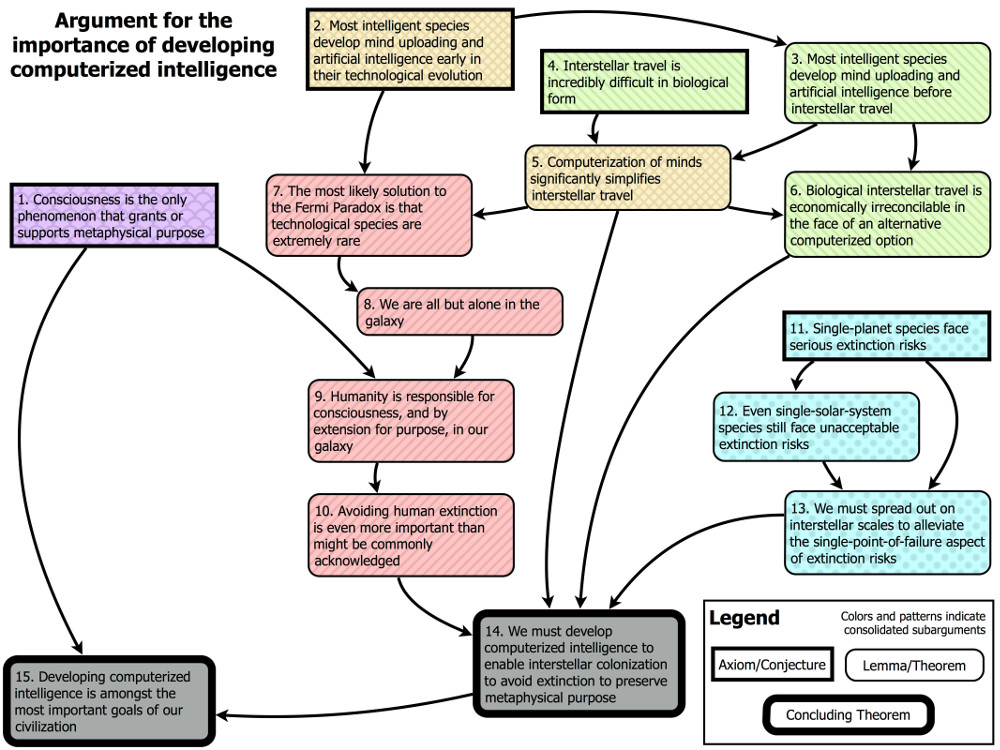
Settletics describes the principles, laws and general technological aspects of the transfer of consciousness to another (preferably non-biological) medium. A stricter definition: Settletics is a hot backup technology for neuroinformation . This is what distinguishes it from projects to create an artificial brain from scratch:
«» .
The English name for this method is Gradual in-place replacement; it reflects well the essence of Setleretics and the meaning of the word "overflow": the transfer of consciousness to another medium must be resolved by gradually replacing functional elements of the brain (neurons) with their artificial analogs.
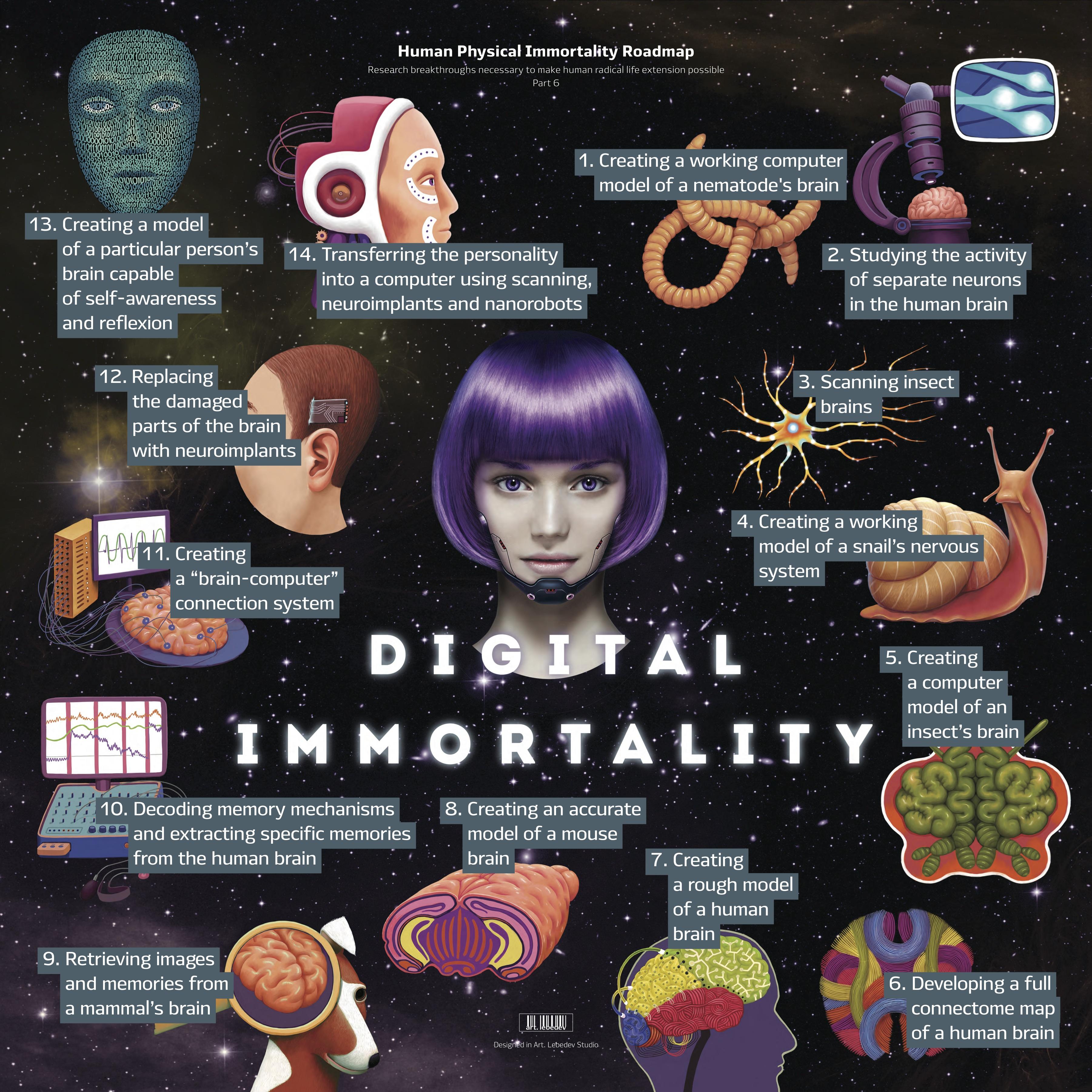
Take a look at this roadmap accidentally found on the net. This algorithm of actions is similar to Settletics, with the only difference that Settletics specifies 10-14 points; she also clarifies what exactly the expression “creating a model” means. This means creating a constantly updated model of the brain, indistinguishable from it in the information sense; this is a bit like the concept of a mirrored RAID array. Here and below, the concept of "model" in the context of Settleticism will be used in this sense.
Settletics should not be confused with the concept of Whole Brain Emulation, because the latter only delineates the conceptual scientific field; Settletic theory supplements this area with specific principles for solving the problem of emulation. To the still unanswered question "What exactly should be considered successful creation of a brain model?" she gives this answer: "A successful model of the brain is one that the brain creates almost independently with the help of assistive computing devices and built-in learning algorithms." In part, the person whose brain model is being created will be able to determine the success of the procedure himself. On the other hand, a universal neurocoding language and software based on it will help him in this.
Before going further, I want to make a small remark. Most scientists have long been inclined to believe that consciousness is the result of the interaction of billions of neurons. A neuron, in essence, does not care where to send and from where to receive information, which means that we can stimulate it artificially, record its response and duplicate this stimulation-response process in a computer. For example, scientists from the UK, Germany, Italy and Switzerland did just that, connecting biological and artificial neurons through a memristor. There is nothing fundamentally new in this - this is a methodology already familiar to specialists in brain-computer interfaces, which is based on universal principles of communication.
I often meet the common idea that moving oneself to another medium will only produce a copy of that personality. This thought often, through excessive philosophical syllogisms, reaches the extreme stage of inventions - the quantum nature of consciousness, panpsychism, or qualia, together with its “redness”, which are hypothetical arguments in favor of the incalculability of consciousness, not to mention the consequences shown wherever possible in science fiction. " twin problems ”.
Danila Medvedev may have contributed to this bias as well, speaking of a copy of himself as himself, since this is just a "matter of agreement." But for me personally, my "copy" is only me when I feeleverything she does, and with my mind I influence her actions - and all the same is true for her. That is, we are in constant synchronization with her and actually expand each other. Thus, we can generally get away from the word "copy", because we both can be connected through some kind of interface with a two-way communication, in fact, forming for each other the third hemisphere of the brain, as integrated into us as one hemisphere is integrated into the second, with only that the difference is that this third hemisphere only mirrors and gradually replaces our hemispheres . It was in a similar vein that the settlereticism did. She suggests getting away from the above problems through two key factors:
- sequential and intravital replacement of dying neurons by neuronanorobots (hereinafter referred to as nanorobots)
- Wiener-Volterra ranks and kernels
If everything is clear enough with the first - an artificial nanorobot duplicates a natural neuron during life, and after its death it takes over all the functions of a natural neuron, and nothing in the perception of identity for a person changes - then with the second interested man in the street, who may not yet appear a potential investor with enough free time will have to sweat. For some reason, Jan decided not to explain the mathematical side of Settleretics to his future potential partners, leaving them to walk through the dark forests on their own.
Okay, let's open Jan 's profile on Habré and go to the list of his comments. After wandering there, we will see a few words about the Wiener-Volterra series-cores. Below is a small list of quotes, let's try to understand them.
1... “The mathematical method“ Wiener-Volterra series and kernels ”is used, which restores the transition or transfer function of a neuron, like a black box, in terms of input and output. That is, it solves the inverse problem. If information from the communication of the subject of control (brain) with the object of control (body) through direct and feedback channels (neuro-humoral system, central and peripheral) somehow affected the transition or transfer function of the neuron, it will certainly be restored, with any specified accuracy ”
2 .“Training [duplicate nanorobots - approx.] Goes by restoring the transition or transfer function of a neuron, by rows and nuclei of Wiener-Volterra, by input and output. Until their (original and duplicate) difference becomes as small as desired. Such a quasi-static transfer removes all the problems of identity, as well as moral, ethical and psychological problems ”
3 . “It is the analysis of the signal, by the method of Wiener-Volterra series and kernels, that allows us to establish the correlation dependence in the signal. This is similar to the least squares method, which approximates a series of points on a suitable curve. Only here functions are approximated by functionals. Integral convolutions of the nth order. "
4 .“If data processing goes through a hierarchical network, shrinking into the coefficients of the Wiener-Volterra series and kernels, on implanted nodal microcircuits, then a relatively small flow of information will have to be transmitted outside”
5 . “Actually, it is these correlation coefficients, for all neurons, that will make up a unique individuality for the psyche of the transmigrant. And it is them that form the Wiener-Volterra kernels. ”
I think that few of you have managed to use the series-kernels method in practice, but some are hearing about it for the first time. For me personally, the videos about the Taylor-Maclaurin series from YouTube (for example, this), where, when visualizing the drawing of functions on a graph, it becomes clear that this entire mathematical orchestra is needed only to remove neural spikes as accurately as possible and duplicate them into a computer. That is, their whole essence consists in the accuracy of picking up a neurosignal: the mathematical function, as it were, with every infinitely small step, makes an amendment for itself and strives for ideal duplication of the original biological neuroimpulse into the computer.
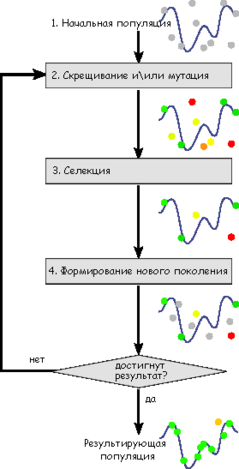
Ideal approximation to a curve as a demonstration of a genetic algorithm
Just if in the Taylor-Maclaurin series there is a connective “point-function”, then in the series-kernels of Wiener-Volterra the connective is already a “function-functional”.
There is also such a thing as the coefficients (h) of the Wiener-Volterra series-kernels, and their essence is already in the capacitydata transmitted to an external computer:
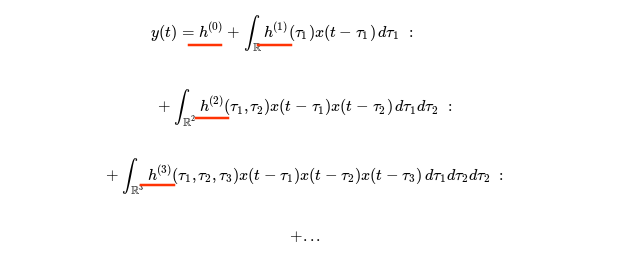
As Yang himself says , "transmitting only 3 values instead of 'many, many' for each neuron significantly (by orders of magnitude) relieves the communication channel."
Having looked for information on the network (mainly in the foreign segment), you can see a considerable number of scientific works and understand: data compression through the coefficients of the Wiener-Volterra series-kernels is really practiced in a number of areas. Most likely, here it will be useful for specialists to familiarize themselves with the work of the Marmarelis on the analysis of physiological (nonlinear) systems, which also include a single neuron: P. Marmarelis, V. Marmarelis Analysis of physiological systems. White noise method. / Per. from English Dr. Biol. E.A. Umryukhina. - M .: Mir, 1981 .-- 481 p.
Inconvenient questions
But no matter how intuitive the technology is, there are a number of serious questions to it. Until now, Settleratics has been a fairly transparent science, many of whose components are replicated in one way or another in the network and do not go into any conflict with existing developments or technological trends in neurosciences. But this is the upper, abstract level of Settleticism. It also has a dark and undisclosed side that you will inevitably encounter when trying to understand the low-level, technical-specific content of Yang's sentences. A number of these problems can be solved theoretically, but this requires the participation of qualified neuroscientists and neuroengineers.
They must be resolved (and, in an amicable way, supplemented with unaccounted for problems), as a preliminary proof of concept that will allow you to create a real settler roadmap, open and transparent for the entire immortalist community.
First of all, any of those who read Jan Korchmaryuk's articles on his official website saw that nanorobots alone are not enough - you also need a chip implanted in the head, which will compress all neural data before sending it to an external computer. But how will this chip be able to receive such a huge armada of signals from 80-100 billion nanorobots, and even understand where the signal came from? Is it really necessary to "solder" its own unique ID into each of these little ones, and keep a huge database of them in the chip itself? How can we synchronize all processes? Settletics does not imply a wired matrix interface, in which the problem of identifying the signal source is solved by the system architecture itself. Here the chip receives a huge array of data as input,for the processing and structuring of which Settletics does not currently offer solutions.
The brain does not maintain a database about each of its neurons and all the connections between them, it does just fine without it. But to duplicate brain functions in real time in a neuromorphic system, we must take into account the following:
- Each nanorobot captures the signal of its neuron and sends it to the chip.
- The chip compresses the entire received signal array with Wiener-Volterra series-kernels and sends the data to the neurocomputer.
- The neurocomputer contains neurons - duplicates of natural neurons.
- , , - . - . , , « ».
A natural objection may arise here: it is not necessary to calculate the lost neurons on an external computer, because nanorobots can take over this work. But building a sufficiently small, fully functional cyber neuron that can integrate into the nervous system without damaging it is a task for a much more distant future, for which there is no time now.
Ian already tried to answer the problem described above here, on Habré, but his answer did not clarify the situation. To a completely logical question:
"How will you transmit these signals from each sensor to the chip through biological tissues?"
Jan replies:
“ , — , , . , , 1963 , L...”
That is, it turns out that the chip will receive signals from a certain group of end neurons connected to it (the group that is closest to the chip), and those huge sets of neurons whose signals have not reached this group will simply be ignored? And if, for example, not a separate group of neurons, but only one neuron were attached to the chip, could it also be possible to remove all consciousness at once? The general scheme of all this connection is very vaguely described. Even if we turn each nerve fiber into a micro-antenna (which he really writes about on his website), this will not save us from the problems of spatial identification of signal sources. I will put myself in the shoes of an investor and say that I would be very confused by all this before making a decision on financing.
We go further on his answer:
“... I also considered the possibility of ultrasonic waveguide transmission (the hypothesis of a molecular calculator in the cytoskeleton tubes according to Lieberman, mentioned in my work in 1998), and the hypothesis of excitable formation as an optical waveguide ...” .
Lieberman is a 20th century scientist whose field of interest ranged from neuroscience to physical theories about how the human soul and God are connected. By modern standards, this is a dubious authority, but be that as it may, it is still unclear how exactly the chip will read all the elements of the circuit, be they nanorobots, waveguide neurons, or even quantum dots.
Further:
“… Also, in the speeches, the possibility was considered to use the internal environment of excitable formations, by laying conductive nanocables in them, formed from nanopowder particles” .
It is even difficult to imagine that nanowires can somehow be laid inside neurons without damaging the nerve cells themselves. Compared to this, the idea of assigning a unique ID to each nanorobot and creating a database on a chip does not seem so difficult to implement.
To prove the efficiency of his science, Korchmaryuk is going to test the methodology of settleretics on nematode worms, which he directly indicates :
“As a first step, I propose a 100% realizable and extremely cheap project. 2 years of work, a team of 5 people, 10 million rubles budget. What's on offer? We take a nematode. We do not even stick a nano into all its 300 neurons. and microelectrodes. We train her a conditioned reflex. We restore the neuron according to Wiener-Volterra in the computer. Then, by neuron, we anesthetize all 300 neurons, connecting artificial and already trained ones instead. And if the completely replaced neurosystem of the worm behaves like a natural worm and with the same reflex, controlling adequately the same biological body, then the resettlement has been successful! For control, we take the already known, mapped neural network of this worm. ”You can
see a more detailed description of the project here .
For a moment, anesthesia involves blocking the transmission of a nerve impulse. That is, first, Korchmaryuk says that he is going to use natural communication channels (and not wireless transmission by light, ultrasound or radio waves), and then he says that he will block these same channels? How will nanorobots transmit signals through natural biochannels? How can we test a nematode for a unique reflex, if conditionally the "brain" and "body" of the worm are not connected in any way and are actually torn apart from each other?
Nanorobots, according toYana, will be needed "only on model animals with a small number of neurons" (nematode worm, mouse, etc.). For monkeys and humans, Yang is going to use the more modern technology of the so-called. "Quantum dots" - "they are smaller and cheaper" nanorobots. Yes, the Internet is replete with such encouraging news, but we all remember from school physics textbooks that light does not penetrate into a dense environment. Therefore, picking up signals from flickering points in the brain - especially in its deepest zones - is a little pointless exercise.
Internal inconsistency of information in Yan's statements occurs regularly. On the one hand, Yang proposes to consider the neuron as a black box, and on the other hand, in this article he gives a description of the molecular computing machine inside the neuron."Intra-neuronal processing seems to take place on a system of molecular quantum holographic computers . " Seriously? If a neuron is just a "black box", then why should we delve into cybernetic analogies at the level of the cell nucleus, intermolecular and intercellular connections? I'm already starting to break down.
To close the questions that arise when reading the site, I went to social networks and looked for Jan's comments in profile groups. In a sense, this is normal - such topics are created just so that teapots can digest complex information with simple analogies. But as a result, I had more questions than answers.
A kind of open forum for the discussion of settleretics and the transfer of consciousness was created in the "Party of Scientific and Technological Progress" group. The forum was not active for long, but among the questions that appeared there, one really important one can be seen:
Question in the subscriber's wording:

To which Jan replied:

If here you feel some discrepancy with what was written about settleretics at the very beginning, you are not alone: following this comment , physical replacement of a neuron is not required, because a dead bio-neuron is "replaced" exclusively by a virtual clone, and then the entire brain is calculated in a computer. But here a serious contradiction arises.
The bottom line is that a dead bio-neuron will rebuild the local configuration of the neural network around itself. If the settleretic systemWithout the presence of physical nanorobots in neurons, this particular brain reserves, then any changes in its electrochemical activity, including the death of neurons, will be automatically synchronized with the neurocomputer - and, moreover, unilaterally . This means that the cyber-brain will receive the same damage as the bio-brain. By synchronizing the damage, the result is a virtual patient with a bunch of neurodegenerative diseases, which can only be used for study by medical students for practical purposes.
Since the virtual neuron in the natural brain has nothingstimulate (the bio-neuron died, there is no duplicate nanorobot), then there can be no question of any feedback from the brain. Without feedback from the brain, we get not a transfer of personality, but its copying and nothing more.
This very moment with virtual neurons is too vaguely described on the site, and Yang either says that it can be done, then says that it cannot. But any of these solutions requires serious theory at the core. We do not yet know if we can interpret the "death" of any neuron as an event that needs to be prevented or as part of the normal homeostasis of the nervous system.
These are theoretical questions that I and others have. In an amicable way, the site settleretics.ru, as the only source of information on settleretics at the moment, should answer these questions, including in popular language, that is, should be as comprehensive as possible . Even if there are problems and blind spots - he should also indicate them and, ideally, offer theoretical answers or facilitate dialogue - for example, through the creation of a forum. So far, this site is presented exclusively by Korchmaryuk's speech - but this speech does not give all the answers and, as we have already seen, is often contradictory.
I will also note that I found approximate answers to my questions not on Korchmaryuk's website, but in the comments to one of the thousands of articles on Habré and on other resources, which can only be found with a special desire. It's as if you could read the FAQ from the Humanity + website only by a long search on the Internet on various forums for questions about transhumanism and Nick Bostrom's answers under them - it could take a week to get acquainted with such an FAQ.
The most recent update of texts on settleretics from Korchmaryuk is presented by the digest article “ Nanoneurotechnologies-2018”. This is one of the most complete works of Korchmaryuk, from which it is possible to derive the entire array of relevant solutions proposed by him. In addition, it can be understood from the article that certain technologies necessary for the transfer of consciousness already exist. The article ends with the announcement of the second part, where Yang promises to describe the means of delivering nanorobots to the brain. However, since 2018, the second part has not appeared on the site ...
Output
As you can see, a significant part of the Settlement is not as transparent as we would like. As long as questions such as the above can be asked about the theoretical part of science, settler studies should not rely on funding verification experiments on humans, monkeys, or even worms.
If you are interested in the article, you can also read the second part , in which the conversation will go directly about cryonics .